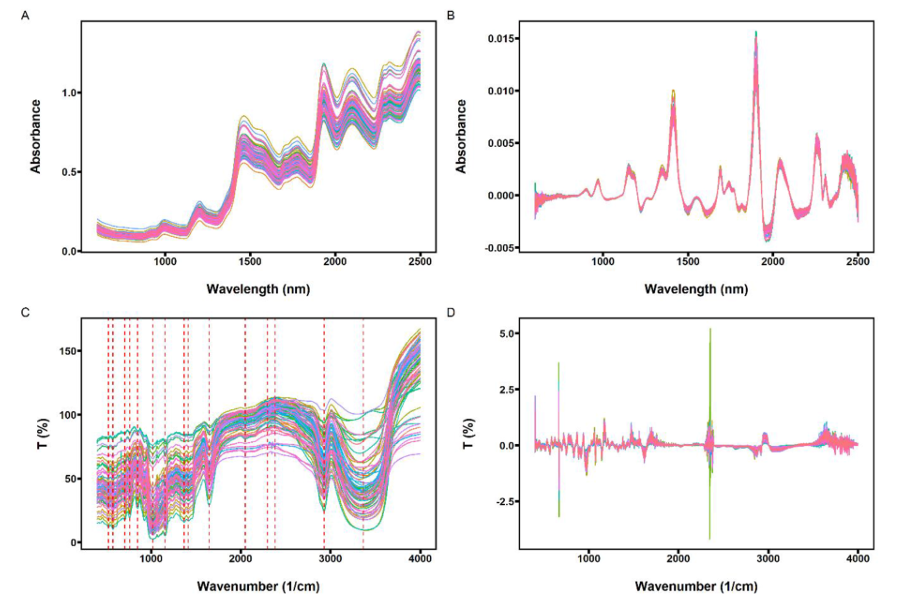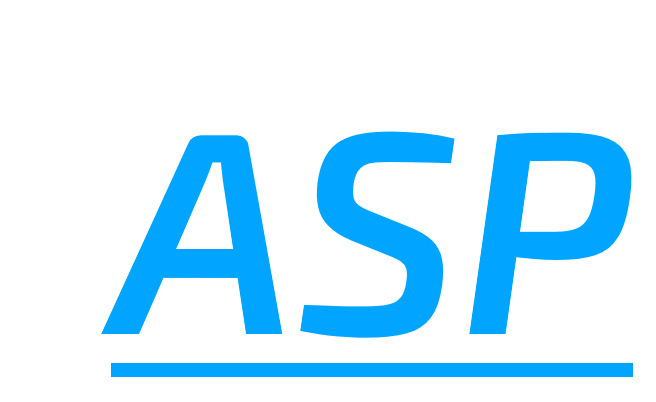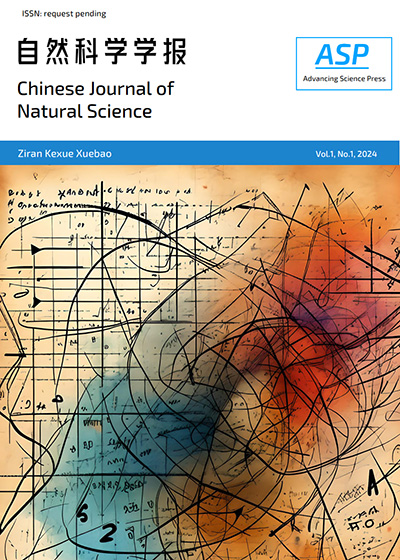食品安全光谱检测技术研究进展
DOI:
https://doi.org/10.52810/CJNS.2025.029关键词:
光谱技术, 食品安全, 食品检测摘要
随着社会对食品安全问题的关注度不断提高,食品安全检测技术的市场需求也在持续扩大和成熟。光谱检测技术以其无损、高效的优势,在食品安全检测领域的应用日益广泛。这些技术包括红外光谱(NIRS、FTIR)、拉曼光谱、高光谱成像(HSI)和太赫兹时域光谱(THz-TDS)。每种技术在食品安全检测的不同领域都有不同的应用,其应用范围受到穿透力、准确性、检测速度以及区分有机物质能力等因素的影响。本文将系统综述光谱检测技术在食品安全检测中的应用及研究进展。这些技术凭借其独特的优势,如高灵敏度、无损检测、快速分析等,为食品安全检测提供了新的思路和方法。综述将分别介绍这些技术的基本原理、在食品安全检测中的具体应用,并探讨其研究进展和未来发展方向。参考文献
Xu, C., Xu, T., Shi, G., Wang, X., Fan, A., Zhang, Y., & Li, J. (2023). Compressive Hyperspectral Computational Imaging via Spatio-Spectral Coding. Acta Optica Sinica, 43(15), 1511003.
Zahir, S. A. D. M., Omar, A. F., Jamlos, M. F., Azmi, M. A. M., & Muncan, J. (2022). A review of visible and nearinfrared (Vis-NIR) spectroscopy application in plant stress detection. Sensors and Actuators A: Physical, 338, 113468.
Zhou, J., Zhang, Q., Jiang, J., Nie, Q., & Bai, Z. (2021). Study on the Rapid Identification of Flavonoids in Chestnut Rose (Rosa Roxburghii Tratt) by FTIR. Spectroscopy and Spectral Analysis, 41(10), 3045.
Jiang, J., Li, C., Yao, S., Shen, S., Ran, N., & Zhang, J. (2024). Principles and typical applications of Raman spectrometers. The Journal of Light Scattering, 36(3), 305.
Li, X., Zhang, Y., Ma, D., Tian, J., Zhang, B., & Chen, J. (2023). Review on the Application of Spectroscopy Technology in Food Detection. Spectroscopy and Spectral Analysis, 43(8), 2333.
Shi, X., Wu, Y., Hou, M., et al. (2012). Application of Molecular Spectroscopy in Food Safety Analysis. Modern Scientific Instruments, 18(3), 6-10.
Scariot, M. A., Karlinski, L., Dionello, R. G., Radünz, A. L., & Radünz, L. L. (2020). Effect of drying air temperature and storage on industrial and chemical quality of rice grains. Journal of Stored Products Research, 89, 101717.
Wang, F., Wang, R., Jing, W., & Zhang, W. (2012). Quantitative dissection of lipid degradation in rice seeds during accelerated aging. Plant Growth Regulation, 66, 49-58.
Miao, X., Miao, Y., Tao, S., Liu, D., Chen, Z., Wang, J., ... & Yu, Y. (2021). Classification of rice based on storage time by using near infrared spectroscopy and chemometric methods. Microchemical Journal, 171, 106841.
Chinma, C. E., Anuonye, J. C., Simon, O. C., Ohiare, R. O., & Danbaba, N. (2015). Effect of germination on the physicochemical and antioxidant characteristics of rice flour from three rice varieties from Nigeria. Food Chemistry,185, 454-458.
Junior, S. B., Mastelini, S. M., Barbon, A. P. A. C., Barbin, D. F., & Ulrici, A. (2020). Multi-target prediction of wheat flour quality parameters with near infrared spectroscopy. Information Processing in Agriculture, 7(1), 13.
Fan, Y., Ma, S., & Wu, T. (2020). Individual wheat kernels vigor assessment based on NIR spectroscopy coupled with machine learning methodologies. Infrared Physics & Technology, 105, 103213.
Benes, M. R. A. (2020). Comprehensive chemometric classification of snack products based on their near infrared spectra. LWT-Food Science and Technology, 133, 110130.
Tziolas, N., Ordoudi, S. A., Tavlaridis, A., Karyotis, K., Zalidis, G., & Mourtzinos, I. (2021). Rapid assessment of anthocyanins content of onion waste through visible-near-short-wave and mid-infrared spectroscopy combined with machine learning techniques. Sustainability, 13(12), 6588.
Sun, X., Zhou, X., Liu, C., Li, C., Zhang, S., & Zheng, D. (2025). Rapid and nondestructive identification of rice storage year using hyperspectral technology. Food Control, 168, 110850.
Huang, F., Peng, Y., Li, L., Ye, S., & Hong, S. (2023). Near-Infrared spectroscopy combined with machine learning methods for distinction of the storage years of rice. Infrared Physics & Technology, 133, 104835.
Zhai, C., Wang, W., Gao, M., Feng, X., Zhang, S., & Qian, C. (2024). Rapid classification of rice according to storage duration via near-infrared spectroscopy and machine learning. Talanta Open, 10, 100343.
Moore, J. C., DeVries, J. W., Lipp, M., Griffiths, J. C., & Abernethy, D. R. (2010). Total protein methods and their potential utility to reduce the risk of food protein adulteration. Comprehensive Reviews in Food Science and Food Safety, 9(4), 330-357.
Chen, D., Wang, Z., Cui, W., Zhang, J., Zhang, J., Wu, D., ... & Xu, X. (2022). High throughput screening of steroidadulterants in foods via stable isotope labelling and flow injection analysis-tandem mass spectrometry. Journal of Chromatography A, 1667, 462891.
Wang, Z., Zhang, J., Gao, M., Cui, W., Xu, L., Zhu, X., ... & Xu, X. (2021). Stable isotope labelling-flow injection analysis-mass spectrometry for rapid quantification of 5-hydroxymethylfurfural in drinks. Food Control, 130, 108386.
Bu, X., Zhao, W., Zhang, M., Wu, D., Wu, J., Xu, X., & Chen, D. (2023). Matrix-assisted laser desorption/ionization high-resolution mass spectrometry for high-throughput analysis of androgenic steroid adulteration in traditional Chinese medicine. Talanta, 253, 124006.
He, Y., Bai, X., Xiao, Q., Liu, F., Zhou, L., & Zhang, C. (2021). Detection of adulteration in food based on nondestructive analysis techniques: A review. Critical Reviews in Food Science and Nutrition, 61(14), 2351-2371.
Kharbach, M., Mansouri, M. A., Taabouz, M., & Yu, H. (2023). Current application of advancing spectroscopy techniques in food analysis: Data handling with chemometric approaches. Foods, 12(14), 2753.
Qu, J., Liu, D., Cheng, J., Sun, D., Ma, J., Pu, H., & Zeng, X. (2015). Applications of near-infrared spectroscopy in food safety evaluation and control: A review of recent research advances. Critical Reviews in Food Science and Nutrition, 55(13), 1939-1954.
Lackey, H. E., Sell, R. L., Nelson, G. L., Bryan, T. A., Lines, A. M., & Bryan, S. A. (2023). Practical guide to chemometric analysis of optical spectroscopic data. Journal of Chemical Education, 100(7), 2608-2626.
Zhang, J., Cheng, Y., & Tang, N. (2025). Rapid analysis of protein content in rice noodles using NIR and FTIR spectroscopy for quality control of river snail rice noodle products. Food Control, 168, 110906.
Andrade, J., Pereira, C. G., Almeida Junior, J. C., Viana, C. C. R., Neves, L. N. O., Silva, P. H. F., ... & Anjos, V. C. (2019). FTIR-ATR determination of protein content to evaluate whey protein concentrate adulteration. LWT, 99, 166-172.
Niemi, C., Mortensen, A. M., Rautenberger, R., Matsson, S., Gorzsás, A., & Gentili, F. G. (2023). Rapid and accurate determination of protein content in North Atlantic seaweed by NIR and FTIR spectroscopy. Food Chemistry, 404(Part B), 134700.
U.S. Geological Survey. (2023). Mineral commodity summaries 2023.
Racovita, A. D. (2022). Titanium dioxide: Structure, impact, and toxicity. International Journal of Environmental Research and Public Health, 19(9), 5681.
Andrady, A. L. (2017). The plastic in microplastics: A review. Marine Pollution Bulletin, 119, 12-22.
Browne, M. A., Crump, P., Niven, S. J., Teuten, E., Tonkin, A., Galloway, T., & Thompson, R. (2011). Accumulation of microplastic on shorelines worldwide: Sources and sinks. Environmental Science & Technology, 45(21), 9175-9179.
Schymanski, D., Goldbeck, C., Humpf, H. U., & Fürst, P. (2018). Analysis of microplastics in water by micro-Raman spectroscopy: Release of plastic particles from different packaging into mineral water. Water Research, 129, 154-162.
Meng, X., Zhang, J., Wang, W., Gonzalez-Gil, G., Vrouwenvelder, J. S., & Li, Z. (2022). Effects of nano- and microplastics on kidney: Physicochemical properties, bioaccumulation, oxidative stress and immunoreaction. Chemosphere, 288, 132631.
Prata, J. C., da Costa, J. P., Lopes, I., Duarte, A. C., & Rocha-Santos, T. (2020). Environmental exposure to microplastics: An overview on possible human health effects. Science of the Total Environment, 702, 134455.
Fackelmann, G., & Sommer, S. (2019). Microplastics and the gut microbiome: How chronically exposed species may suffer from gut dysbiosis. Marine Pollution Bulletin, 143, 193-203.
Kirstein, I. V., Kirmizi, S., Wichels, A., Garin-Fernandez, A., Erler, R., Löder, M., & Gerdts, G. (2016). Dangerous hitchhikers? Evidence for potentially pathogenic Vibrio spp. on microplastic particles. Marine Environmental Research, 120, 1-8.
Rao, B. M. (2019). Microplastics in the aquatic environment: Implications for post-harvest fish quality.
Bilandžić, N., Varenina, I., Kolanović, B. S., Oraić, D., & Zrnčić, S. (2012). Malachite green residues in farmed fish in Croatia. Food Control, 26, 393-396.
Cheung, W., Shadi, I. T., Xu, Y., & Goodacre, R. (2010). Quantitative analysis of the banned food dye sudan-1 using surface enhanced Raman scattering with multivariate chemometrics. Journal of Physical Chemistry C, 114, 7285-7290.
Ye, W., Shen, C., Tian, J., Wang, C., Bao, L., & Gao, H. (2008). Self-assembled synthesis of SERS-active silver dendrites and photoluminescence properties of a thin porous silicon layer. Electrochemistry Communications, 10, 625-629.
Geiman, I., Leona, M., & Lombardi, J. R. (2009). Application of Raman spectroscopy and surface-enhanced Raman scattering to the analysis of synthetic dyes found in ballpoint pen inks. Journal of Forensic Sciences, 54, 947-952.
Lee, S., Choi, J., Chen, L., Park, B., Kyong, J. B., Seong, G. H., ... & Lee, K. H. (2007). Fast and sensitive trace analysis of malachite green using a surface-enhanced Raman microfluidic sensor. Analytica Chimica Acta, 590, 139-144.
Bianchi, I., El Hadri, H., Geiss, O., Cheyns, K., Mast, J., Ferraris, F., ... & Auger, F. (2025). A screening method for detection of TiOfi in food based on Raman spectroscopy and its applicability in a regulatory context. Food Control, 168, 110868.
He, S., Xie, W., Zhang, W., Zhang, L., Wang, Y., Liu, X., ... & Du, C. (2015). Multivariate qualitative analysis of banned additives in food safety using surface enhanced Raman scattering spectroscopy. Spectrochimica Acta Part A: Molecular and Biomolecular Spectroscopy, 137, 1092-1099.
Kan, J., Deng, J., Ding, Z., Jiang, H., & Chen, Q. (2025). Feasibility study on non-destructive detection of microplastic content in flour based on portable Raman spectroscopy system combined with mixed variable selection method. Spectrochimica Acta Part A: Molecular and Biomolecular Spectroscopy, 326, 125195.
Blanchard, F., Razzari, L., Bandulet, H. C., Sharma, G., Morandotti, R., Kieffer, J. C., & Hegmann, F. A. (2007). Generation of 1.5 μJ single-cycle terahertz pulses by optical rectification from a large aperture ZnTe crystal. Optics Express, 15(20), 13212-13220.
George, D. K., & Markelz, A. G. (2013). Terahertz spectroscopy of liquids and biomolecules. In Terahertz spectroscopy and imaging (pp. 229-248). Springer.
Mou, S., Rubano, A., & Paparo, D. (2017). Complex permittivity of ionic liquid mixtures investigated by terahertz time-domain spectroscopy. Journal of Physical Chemistry B, 121, 7351-7358.
Tielrooij, K. J., Paparo, D., Piatkowski, L., Bakker, H. J., & Bonn, M. (2009). Dielectric relaxation dynamics of water in model membranes probed by terahertz spectroscopy. Biophysical Journal, 97, 2484-2492.
Mou, S., Rubano, A., & Paparo, D. (2018). Broadband terahertz spectroscopy of imidazolium-based ionic liquids. Journal of Physical Chemistry B, 122, 3133-3140.
Afsah-Hejri, L., Akbari, E., Toudeshki, A., Homayouni, T., Alizadeh, A., & Ehsani, R. (2020). Terahertz spectroscopy and imaging: A review on agricultural applications. Computers and Electronics in Agriculture, 177, 105628.
Martinez, A., Di Sarno, V., Maddaloni, P., Rocco, A., Paturzo, M., Ruocco, M., & Paparo, D. (2025). Chestnut quality classification by THz Time-Domain Hyperspectral Imaging combined with unsupervised learning analysis. Food Control, 168, 110878.
Peng, S., Wei, S., Zhang, G., Xiong, X., Ai, M., Li, X., & Shen, Y. (2025). Discrimination of wheat gluten quality utilizing terahertz time-domain spectroscopy (THz-TDS). Spectrochimica Acta Part A: Molecular and Biomolecular Spectroscopy, 328, 125452.
Jiang, W., Wang, J., Lin, R., Chen, R., Chen, W., Xie, X., ... & Chen, H.-Y. (2024). Machine learning-based nondestructive terahertz detection of seed quality in peanut. Food Chemistry: X, 23, 101675.
Goh, M. S., Lam, S. D., Yang, Y., Naqiuddin, M., Addis, S. N. K., ... & Ma, N. L. (2021). Omics technologies used inpesticide residue detection and mitigation in crop. Journal of Hazardous Materials, 420, 126624.
Umapathi, R., Ghoreishian, S. M., Sonwal, S., Rani, G. M., & Huh, Y. S. (2022). Portable electrochemical sensing methodologies for on-site detection of pesticide residues in fruits and vegetables. Coordination Chemistry Reviews, 453, 214305.
Narenderan, S., Meyyanathan, S., & Babu, B. (2020). Review of pesticide residue analysis in fruits and vegetables. Pre-treatment, extraction and detection techniques. Food Research International, 133, 109141.
Harshit, D., Charmy, K., & Nrupesh, P. (2017). Organophosphorus pesticides determination by novel HPLC and spectrophotometric method. Food Chemistry, 230, 448-453.
Balkan, T., & Yılmaz, Ö. (2022). Method validation, residue and risk assessment of 260 pesticides in some leafy vegetables using liquid chromatography coupled to tandem mass spectrometry. Food Chemistry, 384, 132516.
Zhao, G., Zhou, B., Wang, X., Shen, J., & Zhao, B. (2021). Detection of organophosphorus pesticides by nanogold/mercaptomethamidophos multi-residue electrochemical biosensor. Food Chemistry, 354, 129511.
Zhang, B., Hao, J., Sun, Z., Zhao, X., Zhang, J., & Ma, Z. (2023). Non-food bioactive products for botanical pesticides: Insights into residue and dissipation kinetics of matrine-type alkaloids from Sophora alopecuroides. Industrial Crops and Products, 192, 116032.
Wang, S.-Y., Shi, X.-C., Zhu, G.-Y., Zhang, Y.-J., Jin, D.-Y., Zhou, Y.-D., ... & Laborda, P. (2021). Application of surface-enhanced Raman spectroscopy using silver and gold nanoparticles for the detection of pesticides in fruit and fruit juice. Trends in Food Science & Technology, 116, 583-602.
Wang, T., Wang, S., Cheng, Z., Wei, J., Yang, L., Zhong, Z., ... & Li, P. (2021). Emerging core–shell nanostructures for surface-enhanced Raman scattering (SERS) detection of pesticide residues. Chemical Engineering Journal, 424, 130323.
Xu, M.-L., Gao, Y., Han, X. X., & Zhao, B. (2017). Detection of pesticide residues in food using surface-enhanced Raman spectroscopy: A review. Journal of Agricultural and Food Chemistry, 65(32), 6719-6726.
Xu, L., Abd El-Aty, A., Eun, J.-B., Shim, J.-H., Zhao, J., Lei, X., ... & Wang, J. (2022). Recent advances in rapid detection techniques for pesticide residue: A review. Journal of Agricultural and Food Chemistry, 70(41), 13093-13117.
Bian, H., Ma, B., Yu, G., Dong, F., Li, Y., Xu, Y., & Tan, H. (2024). Fusion features of microfluorescence hyperspectral imaging for qualitative detection of pesticide residues in Hami melon. Food Research International, 196, 115010.
Wang, X., Jiang, S., Liu, Z., Sun, X., Zhang, Z., Quan, X., ... & Li, Y. (2024). Integrated surface-enhanced Raman spectroscopy and convolutional neural network for quantitative and qualitative analysis of pesticide residues on pericarp. Food Chemistry, 440, 138214.
Fan, C., Wei, L., Limeng, Y., Li, Y., Zheng, M., Song, Y., ... & Zeng, C. (2025). A novel ultrafast and highly sensitive NIR fluorescent probe for the detection of organophosphorus pesticides in foods and biological systems. Food Chemistry, 463(Part 2), 141172.
Cai, L., Cao, M., Regenstein, J., & Cao, A. (2019). Recent advances in food thawing technologies. Comprehensive Reviews in Food Science and Food Safety, 18(7).
Anderssen, K. E., Stormo, S. K., Skra, T., Skjelvareid, M. H.,& Heia, K. (2020). Predicting liquid loss of frozen and thawed cod from hyperspectral imaging. LWT-Food Science and Technology, 132, 110093.
Cai, L., Cao, M., Cao, A., & Zhang, W. (2019). The effect of magnetic nanoparticles plus microwave thawing on the volatile flavor characteristics of largemouth bass (Micropterus salmoides) fillets. Food and Bioprocess Technology.
Cai, L., Dai, Y., & Cao, M. (2020). The effects of magnetic nanoparticles combined with microwave or far infrared thawing on the freshness and safety of red seabream (Pagrus major) fillets. LWT, 128, 109456.
Mousakhani-Ganjeh, A., Hamdami, N., & Soltanizadeh, N. (2016). Effect of high voltage electrostatic field thawingon the lipid oxidation of frozen tuna fish (Thunnus albacares). Innovative Food Science and Emerging Technologies, 36, 42-47.
Stefanowicz, P. (2013). Sensory evaluation of food principles and practices. Journal of Wine Research, 24(1), 80-81.
Plakidi, E. S., Maragou, N. C., Dasenaki, M. E., Megoulas, N. C., Koupparis, M. A., & Thomaidis, N. S. (2020). Liquid chromatographic determination of biogenic amines in fish based on pyrene sulfonyl chloride pre-column derivatization. Foods, 9(5), 609.
Hardy, M., Moser, B., Haughey, S. A., & Elliott, C. T. (2024). Does the fish rot from the head? Hyperspectral imaging and machine learning for the evaluation of fish freshness. Chemometrics and Intelligent Laboratory Systems, 245, 105059.
Zhang, W., Cao, A., Shi, P., & Cai, L. (2021). Rapid evaluation of freshness of largemouth bass under different thawing methods using hyperspectral imaging. Food Control, 125, 108023.
Zhang, L., Wang, H., Cheng, L., & Fang, F. (2025). Tighter regulation is needed for AI companions. Nature, 642(8068), 572-572.
Cheng, L., Du, L., Liu, C., Hu, Y., Fang, F., & Ward, T. (2024). Multi-modal fusion for business process prediction in call center scenarios. Information Fusion, 108, 102362.
Chen, C. L., Liao, Y. C., & Fang, M. (2024). Freshness evaluation of grouper fillets by inexpensive e-Nose and spectroscopy sensors. Microchemical Journal, 198, 110145








